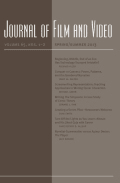
JOURNAL OF FILM AND VIDEO
Scope & Guideline
Fostering Scholarly Excellence in Media Studies
Introduction
Aims and Scopes
- Interdisciplinary Approaches to Film Studies:
The journal embraces various disciplines, integrating insights from sociology, cultural studies, media theory, and the arts to provide a rich analysis of film and video. - Critical Examination of Media Representation:
A consistent focus on how race, gender, identity, and class are represented in film and media, reflecting on their implications in contemporary society. - Innovative Research on Documentary Practices:
The journal highlights the evolving nature of documentary filmmaking, exploring ethical considerations, participatory practices, and the role of documentary in social movements. - Historical and Cultural Contextualization:
It aims to contextualize films within their historical and cultural frameworks, examining influences, trends, and shifts in cinematic practices over time. - Engagement with Emerging Technologies:
The journal addresses the impact of new technologies, such as artificial intelligence and virtual production, on filmmaking practices and narratives.
Trending and Emerging
- Media and Race Dynamics:
Recent publications increasingly address issues of race and representation in film and media, reflecting a growing interest in how these dynamics play out in contemporary narratives and industry practices. - Participatory and Activist Documentary Practices:
There is a marked increase in research focusing on participatory documentary filmmaking, emphasizing its role in activism and social justice, particularly in conflict situations. - Impact of Artificial Intelligence on Filmmaking:
Emerging discussions on the implications of artificial intelligence in media production highlight the journal's engagement with cutting-edge technology and its effects on narrative and authorship. - Ecocritical Perspectives in Film:
A rising interest in ecocritical analyses of film suggests a broader cultural concern with environmental issues, reflecting the growing relevance of ecological narratives in cinema. - Intersectionality in Film Studies:
Recent contributions emphasize intersectional approaches to film analysis, exploring how various identities intersect within cinematic contexts, thereby enriching the discourse on representation.
Declining or Waning
- Traditional Film Criticism:
There is a noticeable decline in papers focused solely on traditional film criticism, as the journal increasingly favors interdisciplinary approaches and contemporary cultural analyses. - Focus on Genre Studies:
Research centered on specific film genres has decreased, possibly due to a broader shift towards exploring the intersections of genre with social issues and identity politics. - Classic Film Analysis:
While historical analysis remains important, there is less emphasis on classic films without contemporary relevance, suggesting a pivot towards more current and culturally resonant subjects. - Nostalgia in Cinema:
The exploration of nostalgia as a standalone theme appears to be waning, as newer themes related to identity, representation, and technology gain traction.
Similar Journals
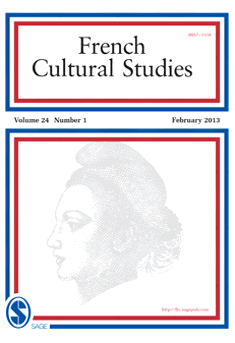
French Cultural Studies
Illuminating the Nuances of French Literature and HistoryFrench Cultural Studies, published by SAGE Publications Inc, is a leading journal in the domains of Cultural Studies and History. With its ISSN 0957-1558 and E-ISSN 1740-2352, this esteemed journal has made significant contributions to the understanding of French culture, literature, and society since its inception in 1990. Notably ranked in the Q2 category for Cultural Studies and Q1 category for History in 2023, it stands out with impressive Scopus rankings, placing 447th in History and 482nd in Cultural Studies. The journal aims to facilitate a nuanced discourse around French cultural phenomena, offering researchers, professionals, and students a platform for high-quality scholarly work. Although it does not operate under an Open Access model, its rigorous peer-review process ensures the publication of impactful articles that advance academic inquiry and foster collaborative dialogue in the field. Adhering to the mission of promoting interdisciplinary research, French Cultural Studies is a vital resource for anyone interested in exploring the complexities of French cultural identity and its global implications.

Dixit
Innovating Ideas in Humanities and Social SciencesDixit is a respected academic journal published by Universidad Católica del Uruguay, Facultad de Ciencias Humanas, primarily focusing on the fields of humanities and social sciences. With an ISSN of 1688-3497 and an E-ISSN of 0797-3691, this journal has been a fully Open Access publication since 2007, enabling free and unrestricted access to its high-quality research. It serves as a vital platform for scholars, researchers, and students to explore innovative ideas and disseminate valuable findings that contribute to the understanding of human experiences across various contexts. The journal's commitment to open access not only promotes knowledge sharing but also facilitates cross-disciplinary dialogue, making it an essential resource for anyone seeking to deepen their insights into the humanities. By fostering collaboration and engaging the academic community, Dixit plays a pivotal role in advancing scholarly discourse in Latin America and beyond.
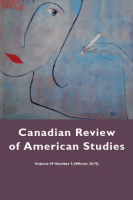
CANADIAN REVIEW OF AMERICAN STUDIES
Exploring the Depths of American CultureCanadian Review of American Studies, published by University of Toronto Press Inc, stands as a vital scholarly outlet in the fields of American studies, literature, cultural studies, and history. With its origins tracing back to 1973, this journal provides a platform for innovative research and critical discourse, appealing to a wide audience of researchers, professionals, and students alike. While currently indexed in Scopus with quartile rankings highlighting its position in various categories—Q4 in Cultural Studies, History, and Literature and Literary Theory—the journal embraces a robust pursuit of knowledge that examines the intricate layers of American culture and its global intersections. Although it does not offer open access, the journal's commitment to academic rigor ensures its contributions are indispensable for understanding the complex narratives that shape American identity. As it continuously evolves, the Canadian Review of American Studies serves as an essential resource for anyone engaged in this dynamic and interdisciplinary field.
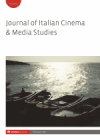
Journal of Italian Cinema and Media Studies
Unveiling the Artistry of Italian Cinema through Scholarly InsightThe Journal of Italian Cinema and Media Studies, published by INTELLECT LTD, is a premier academic journal dedicated to the exploration and critical analysis of Italian cinema and media. Since its inception in 2013, the journal has contributed significantly to the discourse surrounding the intersections of film, culture, and society, making it a vital resource for researchers and professionals alike. With an impressive span of converged years through 2024 and categorized in various quartiles, such as a Q1 ranking in Visual Arts and Performing Arts, the journal stands out in its field. Although it does not currently offer open access, the rigorous scholarship it publishes is accessible to a wide audience, contributing to ongoing dialogues in communication and cultural studies. The journal's impact is further reflected in its Scopus rankings, positioning it within the 64th percentile in Visual Arts and Performing Arts and the 21st percentile in Communication. As a critical avenue for scholarly exchange and creative inquiry, the Journal of Italian Cinema and Media Studies is essential for anyone engaged in the study of media, culture, and the arts.

Studies in Documentary Film
Bridging Theory and Practice in Documentary FilmmakingStudies in Documentary Film is a prominent academic journal published by Routledge Journals, Taylor & Francis Ltd that delves into the rich intersection of documentary filmmaking and critical academic discourse. With an ISSN of 1750-3280 and an E-ISSN of 1750-3299, this journal has emerged as a key resource for researchers, professionals, and students interested in the impact and evolution of documentary forms in contemporary culture. Recognized within the top tier of journals in Visual Arts and Performing Arts, achieving a Q1 ranking, it also holds a respectable Q3 classification in Communication, making it a vital platform for interdisciplinary dialogue. The journal boasts an impressive Scopus ranking of Rank #87/667 in Visual Arts and Performing Arts and an 87th percentile ranking, highlighting its significant influence and contribution to the field. Operating from the United Kingdom, the journal covers a diverse array of topics related to documentary film theory, practice, and cultural implications, inviting contributions that push the boundaries of traditional and contemporary research. While it does not offer open access, the journal's rigorous editorial standards ensure high-quality, peer-reviewed articles that resonate well with an academic audience committed to the study of documentary film.
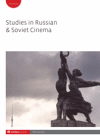
Studies in Russian and Soviet Cinema
Transforming Perspectives on Visual Arts and CommunicationStudies in Russian and Soviet Cinema, published by Routledge Journals, Taylor & Francis Ltd, provides a critical forum for the exploration and analysis of cinematic practices, histories, and cultures from the Russian and Soviet eras. With its ISSN 1750-3132 and E-ISSN 1750-3140, this journal operates under the editorial guidance of leading scholars in the field, making significant contributions to the Visual Arts and Performing Arts and Communication categories, where it is ranked in the upper quartiles of its peer group. The journal spans a rich period of study, converging insights from 2006 to 2024, thereby allowing for an in-depth understanding of the evolution and impact of cinema in societal narratives. Researchers and enthusiasts alike will appreciate its dedication to illuminating the often-neglected cinematic treasures of Russia and the Soviet Union, promoting scholarly discourse through its rigorous analyses and diverse range of articles. This journal serves as an essential resource for anyone interested in the intersections of film, culture, and history.

Jewish Film & New Media-An International Journal
Advancing Scholarship at the Crossroads of Film Studies and Jewish StudiesJewish Film & New Media: An International Journal, published by Wayne State University Press, serves as a crucial platform for scholars and practitioners within the realms of Film Studies, Jewish Studies, and Media Studies. Since its inception, the journal has explored the intersection between Jewish culture and cinematic representation while also addressing contemporary media narratives. With an ISSN of 2169-0324 and E-ISSN 2169-0332, it is indexed in major databases, showcasing solid rankings in various disciplines, including a commendable Q2 rank in Visual Arts and Performing Arts. Despite its current Q4 categorizations in Anthropology and Communication, the journal is noted for its engaging contributions that sow rich discussions about Jewish identity, filmic expression, and media representation. Researchers and students alike benefit from the journal’s wealth of interdisciplinary scholarship, which spans converged years from 2013 to 2017 and 2019 to 2022, ensuring a robust timeline of critical inquiry. As an essential resource for understanding the nuances of Jewish film and new media, this journal occupies a unique niche, inviting contributions that push the boundaries of current academic dialogue.
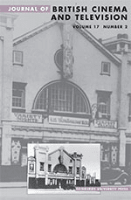
Journal of British Cinema and Television
Engaging with the Pulse of British Visual CultureJournal of British Cinema and Television, published by Edinburgh University Press, is a leading academic journal that explores the dynamic interplay between British cinema and television within the context of cultural studies. With an ISSN of 1743-4521 and E-ISSN of 1755-1714, this journal provides a platform for scholarly discourse, enabling researchers, professionals, and students to engage with critical analyses of screen media and its socio-political impact. As a Q3 journal in Communication and a Q1 journal in Visual Arts and Performing Arts for 2023, it occupies an influential position, particularly in the Arts and Humanities, where it ranks in the 90th percentile. The journal's scope encompasses a wide range of topics, from historical perspectives to contemporary practices in British visual culture, making it essential reading for anyone interested in the evolution and significance of screen studies in the UK. While it is not an open-access publication, the rigorous peer-review process ensures high academic standards and contributes to its esteemed reputation in the field. As it continues to converge from 2004 to 2024, the Journal of British Cinema and Television remains a vital resource for those seeking to deepen their understanding of British media and its global resonance.
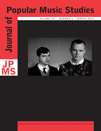
Journal of Popular Music Studies
Engaging in the Dialogue of Sound and SocietyJournal of Popular Music Studies, published by University of California Press, is a preeminent academic journal dedicated to the exploration and analysis of popular music and its cultural implications. With an ISSN of 1524-2226 and an E-ISSN of 1533-1598, this journal encompasses a range of methodologies, encouraging interdisciplinary dialogue across fields such as musicology, cultural studies, and sociology. Since its inception in 1988, it has provided a platform for critical examination of popular music through various lenses, contributing significantly to the understanding of music in contemporary society. The journal maintains a robust reputation, currently holding a Q2 ranking in the Music category of Scopus, positioning itself within the 58th percentile among its peers. As an invaluable resource for researchers, professionals, and students alike, the Journal of Popular Music Studies remains committed to fostering innovative scholarship and discussions that illuminate the impact of popular music on social and cultural landscapes.
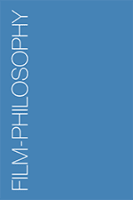
Film-Philosophy
Illuminating Philosophical Insights Through FilmFilm-Philosophy is an esteemed academic journal published by Edinburgh University Press, specializing in the intersection of film studies and philosophical discourse. Since its launch in 1998, this Open Access journal has provided a platform for scholarly debates and innovative research, allowing for free and unrestricted access to its content, which has significantly contributed to the global dialogue on visual culture. With a commendable impact illustrated by its Q1 ranking in Visual Arts and Performing Arts and Q2 in Philosophy, the journal sits within the top quartile of its field. Operating from the United Kingdom, Film-Philosophy is committed to fostering a multidisciplinary approach, inviting contributions from researchers, professionals, and students alike. By engaging with critical theories and the aesthetics of cinema, the journal stands as a vital resource for understanding the philosophical implications of film and its cultural significance.